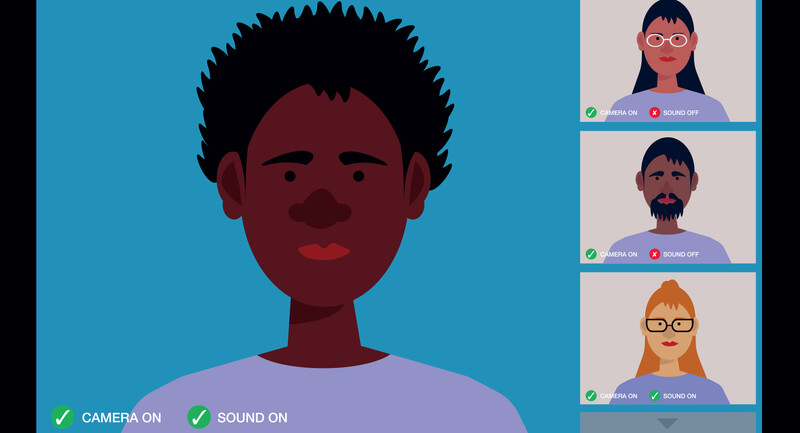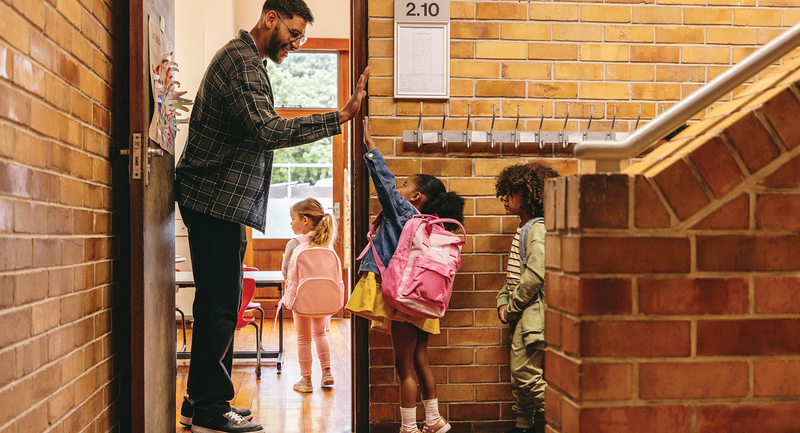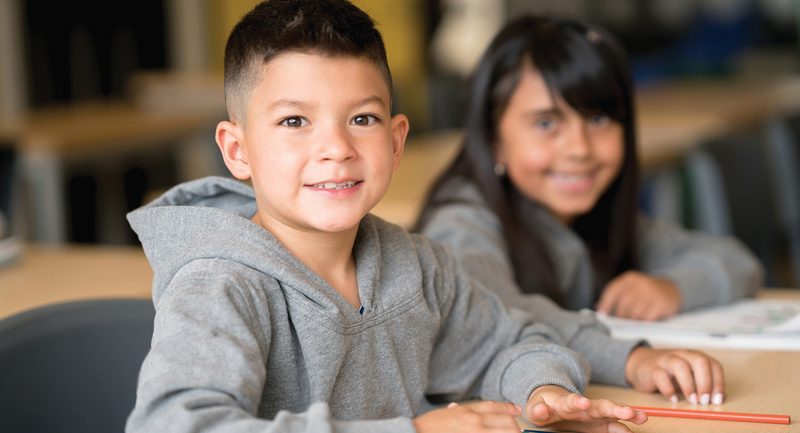- Content: Do the materials address the big ideas and narrower sub-topics you want students to understand?
- Student interest: Have you identified subtopics or related content that students have invested interest in or that connect to interests they have expressed in the past?
- Representation: Do students see themselves in the resources you have chosen? Do these resources help them place themselves in the content and see your content as relevant? Do they get diverse perspectives?
February 1, 2022
•
5 min (est.)•
Vol. 79•
No. 5Ensuring Representation in Digital Resources
Does the classroom content you curate reflect the lives and interests of your students?
Credit: CHRISSTEER / iSTOCK
As you select resources for an entire class, for small groups of students, or for individuals, you have an opportunity to place relevant, personalized, "just right" resources in their hands. But do students see the same faces and hear the same voices in every video, podcast, and article shared with them? Is there a diversity among the resources you share so students see there are experts of different genders, races, ethnicities, and disabilities? As you search multimedia for core and supplemental content, is representation a top-of-mind consideration?
Representation matters. As Marian Wright Edelman, founder and president emerita of the Children's Defense Fund, says, "It's hard to be what you can't see." A purposeful practice of curating digital resources means you are attentive to content, student interest, and representation. All three of these are part of a high-quality plan to place "just right" resources in front of students.
From video links to text-based content, from audio recordings to PDF files, there are many types of media we share with our students across the school day. A video recommendation might pop up when we open YouTube, or we might see another educator posting a resource they love on Twitter, but it doesn't mean it's necessarily a good fit for our instructional purposes. We need to dive deeper into a resource before sharing it with students.
As you decide which content to share, ask yourself the following questions:
Each category is important as you decide which short text to share with students, or which clip from a podcast episode is best to play for your class. But the last bullet point, representation, is one that isn't always considered fully if content is the only factor driving our decision making.
Choosing representative resources is more than checking items off a list. It is a concerted, intentional effort to make sure the media you share with students includes a variety of diverse voices, including in experts, sources, and stories. Alone or working with a group of colleagues to address this goal, be sure to consider these planning questions:
Who are the experts I share with students? This could include the voices behind an instructional video you share or the authors of the articles you post in a learning management system for students to read. A reflection on your answer to this question may lead you to expand your "go-to" list of YouTube videos if the expert voices lack diversity. For example, if all of the narrators for your YouTube videos are white males, it's an opportunity to pause and bring in content with experts from diverse backgrounds.
What sources do you reference? This could include any research materials you share with students or organizations where you gather information. A reflection on your answer to this question may lead you to explore organizations that present a different perspective or demonstrate a commitment to providing access to representative resources. If your class is discussing current events around the world, for example, make sure you share articles from newspapers based in different countries to present a global perspective. Another resource I like is We Need Diverse Books, a website that has a Resources section where educators can discover diverse books.
How do students respond to the resources you share? This could include input from students on who they think is missing from the conversation, or who they would like to hear from when exploring a new topic. A reflection on your answer to this question may lead you to try a prompt for an open-ended question on an exit ticket that asks students, especially older students: "Who else would you like to hear from on this topic? Is there someone else who can give us their insight?" For younger students, you can provide options of materials for students to choose from or survey them on their reactions to the voices and materials you've already used.
Choosing high-quality, representative digital resources is the first step. Making sure students can access them easily is next on the list. In my book, EdTech Essentials: The Top 10 Technology Strategies for All Learning Environments (ASCD, 2021), I discuss this idea of curating resources and talk about how to get these resources into the hands of students, such as providing a collection of links using a tool like Wakelet or making a page of links in a Google Doc.
If you decide to create a collection of resources for families to explore, you'll want to make sure it is easy for them to access, too. You can collect resources on a web page or newsletter, so they are easy for families to access on whatever device they have quick access to, like a phone, links via SMS messaging, or in an email. You might decide to make collections with a built-in translations feature (like multilingual captions in YouTube) or create a collection with resources in languages that address your community needs.
Handpicking content for students is nothing new, and digital tools make it easier than ever to locate and distribute content that meets the needs of individual students. But we also have an opportunity and responsibility to share representative resources that validate student experiences and open the doors to the world around them. By considering content, student interest, and representation, you will present learning materials that are robust and relevant to all.
End Notes
•
1 Edelman, M. W. (2015, August 21). It's hard to be what you can't see. Child Watch Column, Children's Defense Fund.









